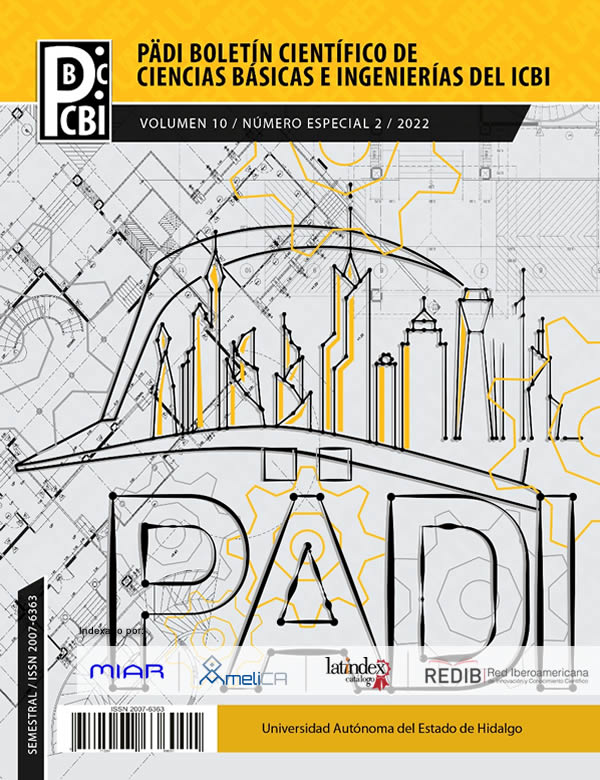Optimization of controls through metaheuristic algorithms applied to aerial vehicles
Abstract
Population-based techniques that are inspired by nature have resulted in effective methods to solve complex optimization problems. These methods are capable of finding optimal parameters for controllers. Here, we designed a compensated Proportional Derivative controller (PD), which enables an unmanned aerial vehicle (UAV) to be positioned in a predetermined path. Optimal parameters for our controller were determined based on minimizing a fitness function computing the error between desired and real dynamics in three-dimensional space. We compared six different metaheuristics methods: Particle Swarm Optimization (PSO), DE variant with linear population size reduction (L-SHADE), Grey Wolf Optimation (GWO), Elephant Herding Optimization (EHO), Whale Optimization Algorithm (WOA) and Continuous-state Cellular Automata Algorithm (CCAA), obtaining the best trajectory when the PSO algorithm was implemented.
Downloads
References
Allu, N. and Toding, A. (2020). Tuning with Ziegler Nichols Method for Design PID Controller at Rotate Speed DC Motor. IOP Conference Series: Materials Science and Engineering, 846(1).
Alweshah, M., Khalaileh, S. A., Gupta, B. B., Almomani, A., Hammouri, A. I., and Al-Betar, M. A. (2020). The monarch butterfly optimization algorithm for solving feature selection problems. Neural Computing and Applications, 0.
Åstr¨om, K. J. and H¨agglund, T. (2004). Revisiting the Ziegler-Nichols step response method for PID control. Journal of Process Control, 14(6):635–650.
Bi, H., Qi, G., Hu, J., Faradja, P., and Chen, G. (2019). Modeling and Analysis of Chaos and Bifurcations for the Attitude System of a Quadrotor Unmanned Aerial Vehicle. Chaos, Solitons and Fractals, 138:109815.
Elhosseini, M. A., El Sehiemy, R. A., Rashwan, Y. I., and Gao, X. Z. (2019). On the performance improvement of elephant herding optimization algorithm.
Knowledge-Based Systems, 166:58–70. Erkol, H. O. (2018). Attitude controller optimization of four-rotor unmanned air vehicle. International Journal of Micro Air Vehicles, 10(1):42–49.
Hernandez-Romero, N., Medina-Marin, J., and Seck-Tuoh-Mora, J. C. (2012). Introducci´on a Matlab para Resolver Problemas de Ingenier´ıa Aplicando Algoritmos Gen´eticos. Pachuca, Hgo.
Kennedy, J. and Eberhart, R. (1995). Particle Swarm Optimisation. Conference on Neural Networks IEEE, 95:1942–1948.
Kramer, O. (2017). Genetic Algorithm Essentials, volume 679. Mirjalili, S. and Lewis, A. (2016). The Whale Optimization Algorithm. Advances in Engineering Software, 95:51–67.
Mirjalili, S., Mirjalili, S. M., and Lewis, A. (2014). Grey Wolf Optimizer. Advances in Engineering Software, 69:46–61.
Mohamed, A. W., Hadi, A. A., and Jambi, K. M. (2019). Novel mutation strategy for enhancing SHADE and LSHADE algorithms for global numerical optimization. Swarm and Evolutionary Computation, 50.
Razinkova, A., Kang, B.-J., Cho, H.-C., and Jeon, H.-T. (2014). Constant Altitude Flight Control for Quadrotor UAVs with Dynamic Feedforward Compensation. International Journal of Fuzzy Logic and Intelligent Systems, 14(1):26–33.
Seck-Tuoh-Mora, J. C., Hernandez-Romero, N., Lagos-Eulogio, P., Medina- Marin, J., and Zu˜niga-Pe˜na, N. S. (2021). A continuous-state cellular automata algorithm for global optimization. Expert Systems with Applications, page 114930.
Subhadip, S. (2014). Genetic Algorithm : An Approach for Optimization ( Using MATLAB ). International Journal of Latest Trends in Engineering and Technology (IJLTET), 3(3):261–267.
Talbi, E.-G. (2009). Metaheuristics : from design to implementation, volume 1. Wiley & Sons, Canada.
Tanabe, R. and Fukunaga, A. (2013). Success-history based parameter adaptation for Di erential Evolution. 2013 IEEE Congress on Evolutionary Computation, CEC 2013, (3):71–78.
Tanabe, R. and Fukunaga, A. S. (2014). Improving the search performance of SHADE using linear population size reduction. Proceedings of the 2014 IEEE Congress on Evolutionary Computation, CEC 2014, pages 1658–
Ustunkok, T. and Karakaya, M. (2019). E ect of PSO Tuned P, PD, and PID Controllers on the Stability of a Quadrotor. 1st International Informatics and Software Engineering Conference: Innovative Technologies for Digital Transformation, IISEC 2019 - Proceedings, (4):0–5.
Valavanis, K. and Vachtsevanos, G. (2015). Handbook of Unmanned Aerial Vehicles. Springer Netherlands, Dordrecht.
Wang, G. G., Deb, S., and Coelho, L. D. S. (2015a). Elephant Herding Optimization. Proceedings - 2015 3rd International Symposium on Computational and Business Intelligence, ISCBI 2015, pages 1–5.
Wang, G. G., Deb, S., and Cui, Z. (2015b). Monarch butterfly optimization.
Neural Computing and Applications, 31(7):1995–2014. Ziegler, J. G. and Nichols, N. B. (1942). Optimum settings for automatic controllers. Trans. ASME, pages 759–768.













